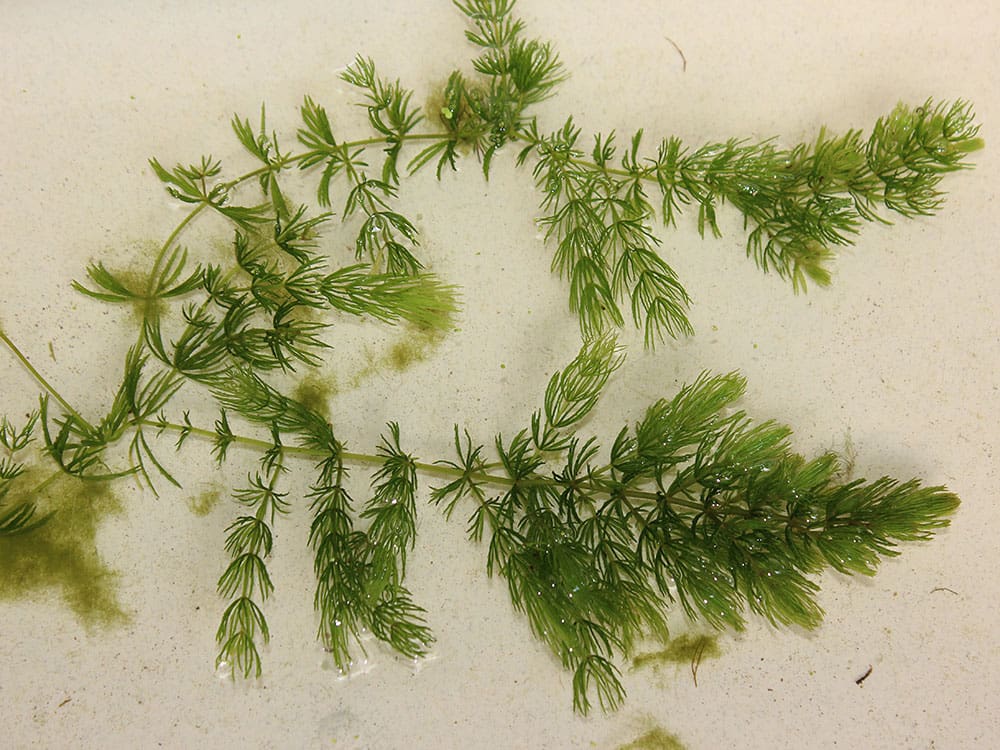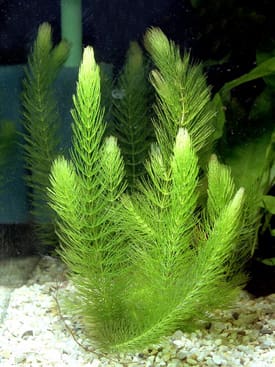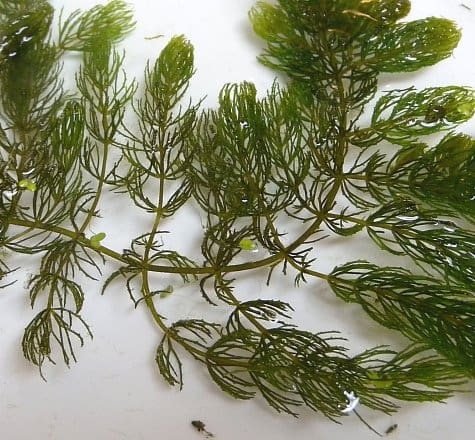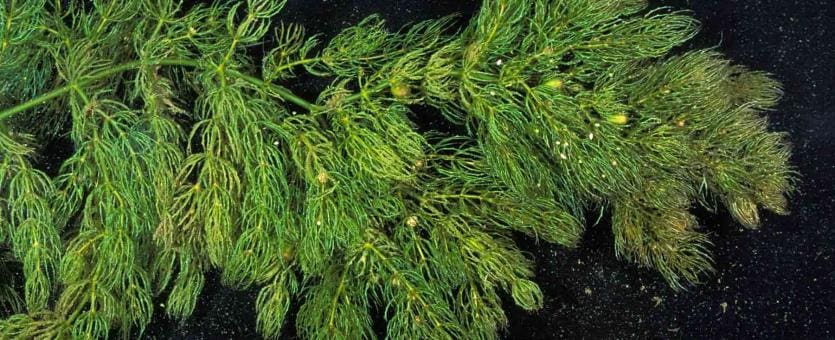From the expansive spectrum of aquatic flora, the plant named Coontail — or Ceratophyllum demersum, as it’s scientifically known — emerges as a subject of particular interest. This article aims to shed light on its distinct characteristics, intricate life cycle, and ultimate significance to the ecosystem it thrives in. By the time you have read this article, you will have gained a comprehensive understanding of this versatile aquatic plant, and perhaps, a newfound respect for the complexities of underwater vegetation.

Identification of the Aquatic Plant Coontail
The aquatic plant Coontail, commonly known as hornwort, is a species that’s often found in a variety of freshwater environments, displaying a distinctive bushy tail appearance from where it derives its name.
Physical Appearance and Distinguishing Features
Coontail, a submersed aquatic perennial, flaunts a feathery, robust, and resilient appearance. Its leaves, streamlined and elegant, overlap one another in whorls spiraling up the stem and rendering a dense foliage. This bushy, compact form gives rise to its common name. Other distinguishing features include the lack of true roots and its grim green to olive-green coloring.
Difference Between Coontail and Similar Species
Amid similar aquatic plant species, distinguishing Coontail can admittedly be challenging, but its resilience and form make it stand out. For instance, unlike milfoil, Coontail has stiff and brittle stems that do not root in the sediment, making it mobile and flexible in nature. Its whorled leaves, unlike several other waterweeds, have serrated edges and a coarser texture.
Habitat and Range
Coontail has a broad habitat tolerance, with examples proliferating in both still and flowing water bodies such as lakes, ponds, streams, and canals. This plant is ubiquitous, with a global distribution across various temperate and tropical countries.
Botanical Description of Coontail
Delving into the botanical description of Coontail brings us a step closer to understanding this fascinating aquatic plant’s intrinsic characteristics.
Scientific Classification and Taxonomy
Belonging to the kingdom Plantae, the scientific name of Coontail is “Ceratophyllum demersum”. It comes within the Ceratophyllum genus, part of the broader Ceratophyllaceae family.
Leaf, Stem, and Root Structure
Coontail has a freely floating stem that extends to lengths of one to three meters. Its leaves are evergreen, dark green in color, and they grow in whorls on its stem. An absence of true roots makes Coontail a free-floating plant, anchored only by modified leaves functioning as holdfasts.
Flower and Fruit Description
Coontail may seem unassuming, with its minuscule, greenish-brown flowers growing directly on its stems. The spiny fruits that follow are tiny—typically 4 to 5 mm long—and hardy, facilitating Coontail’s robust dispersal and longevity.

Life Cycle and Growth Pattern of Coontail
Knowing the life cycle and growth pattern of Coontail imparts immense knowledge about the viability and environmental influences on this aquatic species.
Germination and Early Growth Stages
Coontail propagates through both sexual and asexual means. Germination occurs underwater with seeds remaining dormant during winter and sprouting as temperatures rise.
Adult Plant Development
As Coontail reaches its adult stage, it continues to proliferate by vegetatively creating more stems or buds. A mature Coontail plant may grow to several meters long, intertwined with other aquatic vegetation.
Reproduction and Seed Dispersal
Coontail plants, being monoecious, have both male and female flowers on the same plant. However, its primary mode of reproduction is vegetative, where fragments break off and re-root elsewhere, dispersing seeds over wider areas through water currents, wildlife, and human interaction.
Ecological Role of Coontail
Coontail serves a remarkable ecological role, proving to be a strong edifice in promoting biodiversity and ecosystem health.
Contribution to Aquatic Ecosystem Health
Coontail is exceptionally adept at absorbing excess nutrients in water bodies, thereby preventing eutrophication, algae blooms, and ultimately preserving water quality. It also releases oxygen into the water, promoting healthy aquatic life.
Role in the Food Chain
In the aquatic ecosystem, Coontail plays an integral role in the food chain. It provides food to various herbivorous aquatic organisms and houses myriads of invertebrates that, in turn, serve as food for other species.
Habitat Provision for Other Species
Due to its dense form, Coontail serves as a natural refuge and breeding ground for numerous aquatic species, including fish, invertebrates, and water birds, promoting overall biodiversity.

Beneficial Uses of Coontail
Coontail is not just ecologically significant, but it also has several economically and aesthetically important uses.
Use in Water Purifying Processes
Used extensively in wastewater treatment practices, Coontail absorbs pollutants and excess nutrients from the water. Its propensity to absorb heavy metals also makes it a key candidate for bioremediation contexts.
Use as a Decorative Plant in Aquariums and Ponds
Its bushy form, bringing in a unique texture and shade of green, ranks Coontail as a favorite amongst aquarists for aquariums and decorative ponds.
Medicinal Properties if Any
While thorough research is scant, some sources suggest that Coontail has been traditionally used for medicinal purposes, specifically in the treatment of certain skin conditions.
Potential Problems Caused by Coontail
Despite its benefits, Coontail poses several potential problems, particularly if it becomes invasive.
Invasive Species Characteristics
Given its high reproductive rate and resilience, Coontail can rapidly overpopulate water bodies, leading to dense mats that obstruct waterways, restrict recreational activities and even alter water chemistry.
Potential Threats to Local Biodiversity
An unchecked growth of Coontail may result in monoculture, threatening local biodiversity by out-competing native plants for resources.
Control Measures and Management Practices
Managing excessive Coontail growth involves employing mechanical, chemical, and biological control measures, such as manual removal, herbicides, or introducing grass carp—an aquatic herbivore fond of Coontail.

How Coontail Adapts to Its Environment
Coontail, incredibly resilient, manifests a suite of environmental adaptations, letting it thrive in diverse aquatic habitats.
Adaptations for Water Living
Being a free-floating plant with no true roots, Coontail has adapted optimally to life in water. Its buoyant stem permits it to float, and its whorled leaves resist water flow and allow absorption of nutrients directly from the water.
Resistance to Various Climatic Conditions
Coontail displays a high level of tolerance against various climatic conditions, surviving wide-ranging temperatures and depths, and even enduring turbid and low-light environments.
Adaptations for Dispersal and Reproduction
Its buoyant stems and spiny, hardy seeds aid in Coontail’s dispersal across water bodies. Also, being capable of vegetative reproduction, even a tiny fragment can give rise to a new plant, thereby enhancing its survival odds.
Cultivation and Care of Coontail in Aquariums
Aquarists primarily favor Coontail for its aesthetic appeal as well as its low maintenance and care requirements.
Ideal Growth Conditions
For optimum growth, Coontail prefers a temperature range of 59-86°F, though it can survive in extremes. It grows ideally under full to partial sunlight and accepts a wide range of pH conditions, though slightly acidic to neutral water is preferred.
Maintenance Requirements
Due to its fast growth rate, regular trimming of Coontail is necessary to prevent it from taking over the aquarium or pond. Otherwise, it’s a low-maintenance plant requiring minimal care.
Dealing with Diseases and Pests
Coontail is fairly resistant to most aquatic diseases and pests, thanks to its resilience and robust growth. However, it could be susceptible to common aquatic plant diseases and pests.

Interaction of Coontail with Other Aquatic Plants
The relationship of Coontail with other plants is a mix of competition and cooperation, profoundly influencing the structure of the aquatic community.
Competition with other Plants
In environment-laden resources, Coontail can outcompete native and other aquatic plants, posing threats to local floral diversity. Its dense mats can stifle the growth of other species by obstructing sunlight.
Synergistic Relationships Where Applicable
Coontail often engages interactively with other aquatic organisms, either hosting microorganisms on its surfaces or breaking down into detritus serving as food for others, thereby benefiting the communal ecosystem.
How Coontail affects Other Plant Species
Coontail can affect other plant species both positively by providing a resource-abundant habitat and negatively by aggressively dominating available resources.
Scientific Research on Coontail
Scientific pursuits pertaining to Coontail unveil a plethora of knowledge, promising intriguing future prospects.
Current Studies and Findings
Current studies attest to the exceptional capacity of Coontail to absorb heavy metals, hinting at a breakthrough in remediation. Its fast growth rate and robustness are also being investigated for potential bioenergy applications.
Historical Importance in Scientific Research
Historically, Coontail’s resilience, ubiquity, and ecological importance have made it a model organism in aquatic botanical studies, particularly in understanding the impacts of eutrophication and climate change on freshwater ecosystems.
Future Directions for Research
Future research directions include exploring the potential use of Coontail as a bioremediation agent, renewable energy source, and detailed investigations into its biochemical and genetic characteristics. This resilient and robust aquatic plant continues to intrigue researchers with its multi-faceted potentials, promising strides in future advancements.
Thus, Coontail represents an essential cornerstone within ecosystems, economies, and scientific explorations, underpinning the significance of understanding and valuing this resilient aquatic species as we voyage further into our investigations of life beneath the water’s surface.